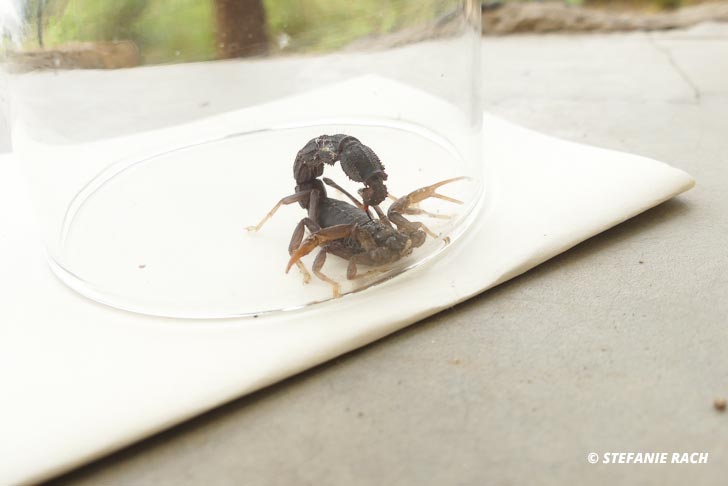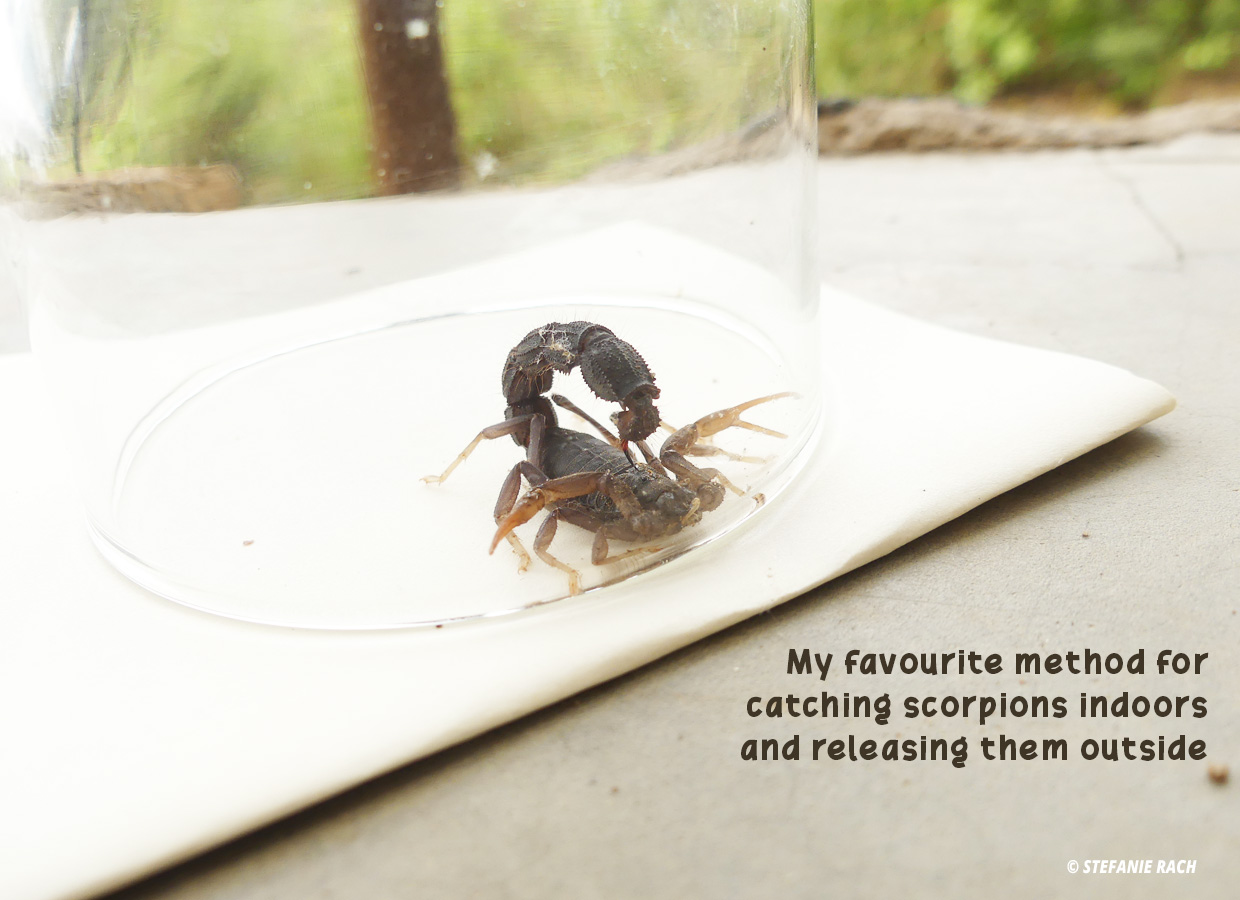Tracking Mother Nature: My Neighbour, the Scorpion
Many of my family and friends often ask me if I am not afraid of scorpions and other venomous animals in South Africa. I can answer this question with a clear “no” – which always results in surprised looks. Because anyone who lives in nature (whether it’s the savannah of South Africa or the boreal forests of Canada or the tropical rainforest of Thailand) knows that it’s simply a matter of knowing the behaviour of the animals in the environment. And what better way to study scorpion behaviour than tracking?

By Stefanie Rach
When I was learning the basics of tracking, I stayed for several weeks in a basic camp. It turned out on the very first evening that it was not only us students who lived in this camp: A Transvall Thicktail Scorpion (of all things the most venomous scorpion in this region) had chosen the area of the camp as its territory. At first I didn’t really know how to deal with this situation. Could I even move freely in the camp without having to search the ground carefully before every step?
But very quickly you learn the first fundamentals: there are many animals that do not see scorpions as a potential danger, but as a tasty meal. These animals also include many bird species. Scorpions have at least solved this problem by only venturing out at night. They also can’t cope too well with the cold temperatures in winter and are therefore active in summer. They feed on insects, spiders, centipedes and other creepy-crawlies (so actually it’s quite handy to have a scorpion around).

On our bush walks we often came across narrow holes in the sand, looking like small, shallow cave entrances. These were the nests of scorpions. To protect themselves from the sun and possible predators during the day, they bury themselves in the sand. So we discovered how often we are actually surrounded by scorpions without realising it. Many scorpions have their own unique style of burrowing. Soon it was part of our tracking exercises to identify one or two scorpion species just by the shape of their burrow entrance, without seeing the animal itself.
But often we didn’t even have to leave the camp for the tracking lessons. On the way out, we could already “read” the first news about what was going on in the camp at night when we were asleep: We found tracks of beetles, lizards and often of our scorpion. Scorpions have eight legs with which they nimbly dash across the sand (both forwards and backwards). Back in the sand, they leave small scratches on either side of their bodies where their feet have touched the ground. Beetles, on the other hand, only have six legs, which is why the Toktokkie beetle, for example, leaves a pattern of three prints on each side of its body. In this way, we were able to trace each morning what our camp scorpion had been up to during the night. It turned out that he liked to hunt at the edge of the camp towards the river. Maybe because he had his peace and quiet from us there in the evening, since we were gathered around the campfire site?

Every problem has a solution, every solution needs support.
The problems we face are urgent, complicated, and resistant to change. Real solutions demand creativity, hard work, and involvement from people like you.

Stay in the know.
Be ready to act.
To keep up to date with our latest news, events, marches,
campaigns and fundraising activities.
